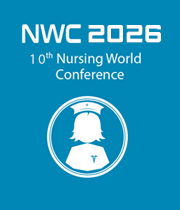Title : Latent profile analysis of patient activation with High-Risk Non-Disabling Ischemic Cerebrovascular Events (HR-NICE)
Abstract:
Objective: To explore the latent profiles of activation levels and their influencing factors in patients with high-risk non-disabling ischemic cerebrovascular events(HR-NICE),providing a reference for improving their self-management abilities and reducing recurrence rates.
Methods: Using convenience sampling, patients with HR-NICE who completed primary treatment in the neurology department of a tertiary Grade A hospital in Zhengzhou between September 2024 and March 2025 were selected as the study participants. Surveys were conducted using the General Information Questionnaire, Patient Activation Measure (PAM), Self-Efficacy for Managing Chronic Disease Scale (SEMCD), Stroke Knowledge Questionnaire (SKQ), and Social Support Rating Scale (SSRS). Latent profile analysis (LPA)was employed to identify distinct subgroups of patient activation levels. Multinomial logistic regression analysis was used to assess the impact of various influencing factors on the different profile classifications.
Results: A total of 274 questionnaires were distributed, with 261 validly returned, yielding an effective response rate of 95.26%.The LPA results revealed three distinct latent classes of activation levels among HR-NICE patients: Low Cognition-Low Activation Group(14.94%),Overall Higher-High Activation Group(16.58%),Low Belief-Moderate Activation Group(68.48%).Factors including age, education level, monthly household income per capitative of medical insurance, family history of stroke, social support score, chronic disease self-efficacy score, and stroke knowledge score were identified as statistically significant influencing factors(P<0.05)on the activation level profiles.
Conclusions: The activation levels of HR-NICE patients exhibit significant heterogeneity. Healthcare professionals can develop targeted nursing interventions based on the characteristic features and influencing factors of the different activation level profiles to reduce the risk of disease recurrence and enhance patients ‘self- management abilities.
Key words: High-RRisk Non-Disabling Ischemic Cerebrovascular Events; Patient Activation; Latent Profile Analysis



